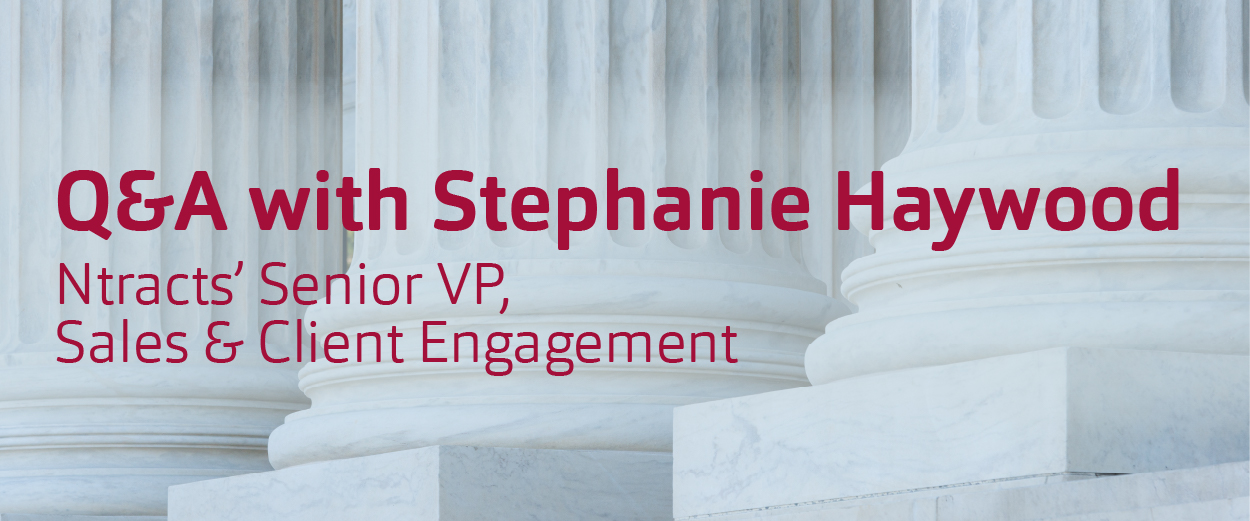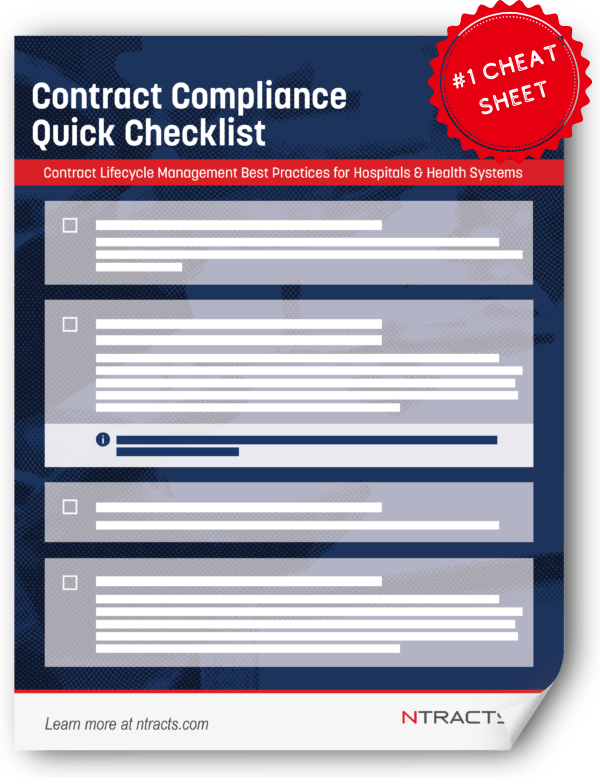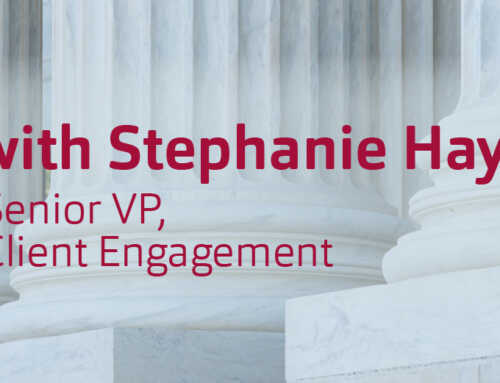
In a Q&A with Ntracts’ Senior Vice President of Sales & Client Engagement, Stephanie Haywood discussed the necessity of a strong governance framework including the steps companies must take to achieve leadership buy-in and above all, ensuring your whole team understands the ‘why.’
Where should an organization start when they are either establishing a new governance process or revisiting the current process?
First, it’s important to start with ‘why’ and secure sponsorship.
In my experience having supported thousands of healthcare organizations through this process, the absolute first thing an organization should focus on is clearly defining the ‘why’ and securing executive sponsorship. Stakeholders must understand the specific business problems you’re trying to solve or the strategic objectives you aim to achieve. Are you trying to mitigate risk, ensure compliance, improve decision making or efficiency? Maybe it’s all of these, but alignment and clearly defining the ‘why’ becomes your guide throughout the process.
When you experience challenges, coming back to this helps keep the project on course. It’s imperative that you have these conversations early, and everyone is on board.
Simultaneously, you must gain active and visible commitment from top leadership. This sponsorship is crucial for navigating the inevitable challenges.
What challenges have you seen other organizations face when they’ve gone through this process?
Several. First would be lack of clear vision, buy-in and leadership support. This is why the first step of securing executive sponsorship and defining your ‘why’ is key. Without strong, visible and consistent support from top leadership, governance initiatives often falter due to a lack of perceived importance and authority.
Additionally, there are often unclear objectives and misalignments: If the governance process isn’t clearly linked to strategic business objectives and its value isn’t well-articulated, it can be difficult to gain widespread support and prioritize efforts. To address this, it’s important to define the scope, ensuring it’s neither too narrow nor too broad. This again is where you need to ensure everyone understands the ‘why’; by doing so, you eliminate confusion, inefficiencies and the inability to achieve meaningful results.
Thirdly, lack of awareness and understanding: If employees don’t understand the ‘why’ behind the governance process and its benefits, they are less likely to adopt and support it.
There is also organizational and cultural resistance. Change is hard. Employees may resist new processes, policies or controls that they perceive as burdensome, overly restrictive or a departure from familiar ways of working. Overcommunication is key.
This often occurs because there is fear of transparency or loss of control: Governance often brings increased transparency, which can be uncomfortable for some. Others may fear losing autonomy over their processes – making sure each area sees the benefits of an established process is key.
A key part of a governance structure is bringing together departments that may have previously operated in silos, which makes cross-functional collaboration and consistent application of governance principles difficult.
Oftentimes there are also resource constraints. Existing staff often have to take on governance responsibilities in addition to their regular duties, so it’s important to identify your committee and secure their commitment.
Implementing and maintaining a governance framework also requires resources—both time and financial—for tools, training and dedicated personnel. Insufficient funding can be a major obstacle, especially when often it’s hard to quantify the return on investment.
It’s also often challenging to sustain momentum and ensure effectiveness. Governance is not a one-time project. Without ongoing monitoring, auditing and refinement, the process can become outdated and ineffective.
Why is it so often a challenge to sustain that momentum and ensure the governance process actually stays effective over time?
After we’ve designed this fantastic governance process, everyone’s initially on board…but then comes what I call ‘the long haul.’
Initial enthusiasm naturally dips, right? New projects pop up and suddenly, the day-to-day demands of the business can start to overshadow crucial governance routines. Another big reason is that the benefits of good governance aren’t always flashing neon signs. Risk mitigation and smoother decision making are incredibly valuable, but they can be subtle, which makes it tough to constantly shout about the wins.
Governance isn’t a ‘set it and forget it.’ It needs constant attention, monitoring and tweaking, which can feel like a continuous effort, sometimes leading to what we might call ‘governance fatigue’ if people feel it’s just more bureaucracy without clear value.
So, how do we overcome this? Here is your cheat sheet for overcoming governance fatigue:
First, embed it, don’t bolt it on. Weave governance tasks directly into existing workflows and peoples’ regular responsibilities. It shouldn’t feel like an extra step; rather, it’s the culture you instill on ‘how we do things around here.’
Second, constantly demonstrate its value. And this is key. You have to actively track and, more importantly, communicate the successes. Show how governance is helping hit those business goals or sidestep potential problems. Make those benefits tangible and visible.
Third, think ‘constant evolution’. Governance should be a living, breathing process. Set a commitment, regularly review how it’s working; actively seek feedback and be ready to simplify or adjust things to keep it practical and effective.
You have to keep your leaders engaged. Their continued, visible support is critical. When leadership champions governance, it signals its ongoing importance to everyone.
And finally, automate what you can! Leverage solutions to handle routine monitoring, reporting and compliance checks, which frees up personnel to make things more consistent.
In my experience, by focusing on these areas, organizations move from a governance process that exists to one that thrives and delivers lasting value.
Stephanie Haywood
Stephanie has over 20 years of experience in healthcare contract lifecycle management. Additionally, certified in healthcare compliance, she ensures successful client implementations at Ntracts by providing guidance on contract lifecycle management processes that can mitigate compliance and financial risks, drive efficiencies and enhance organizational operations.



